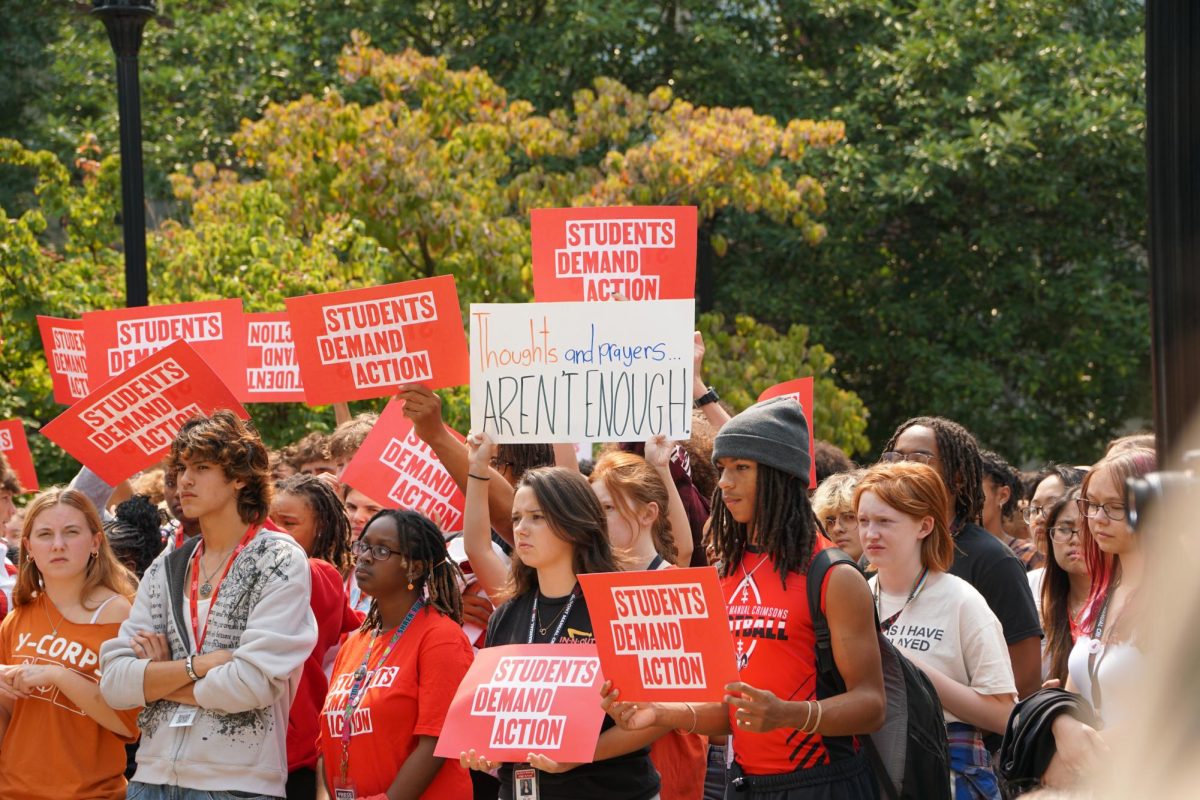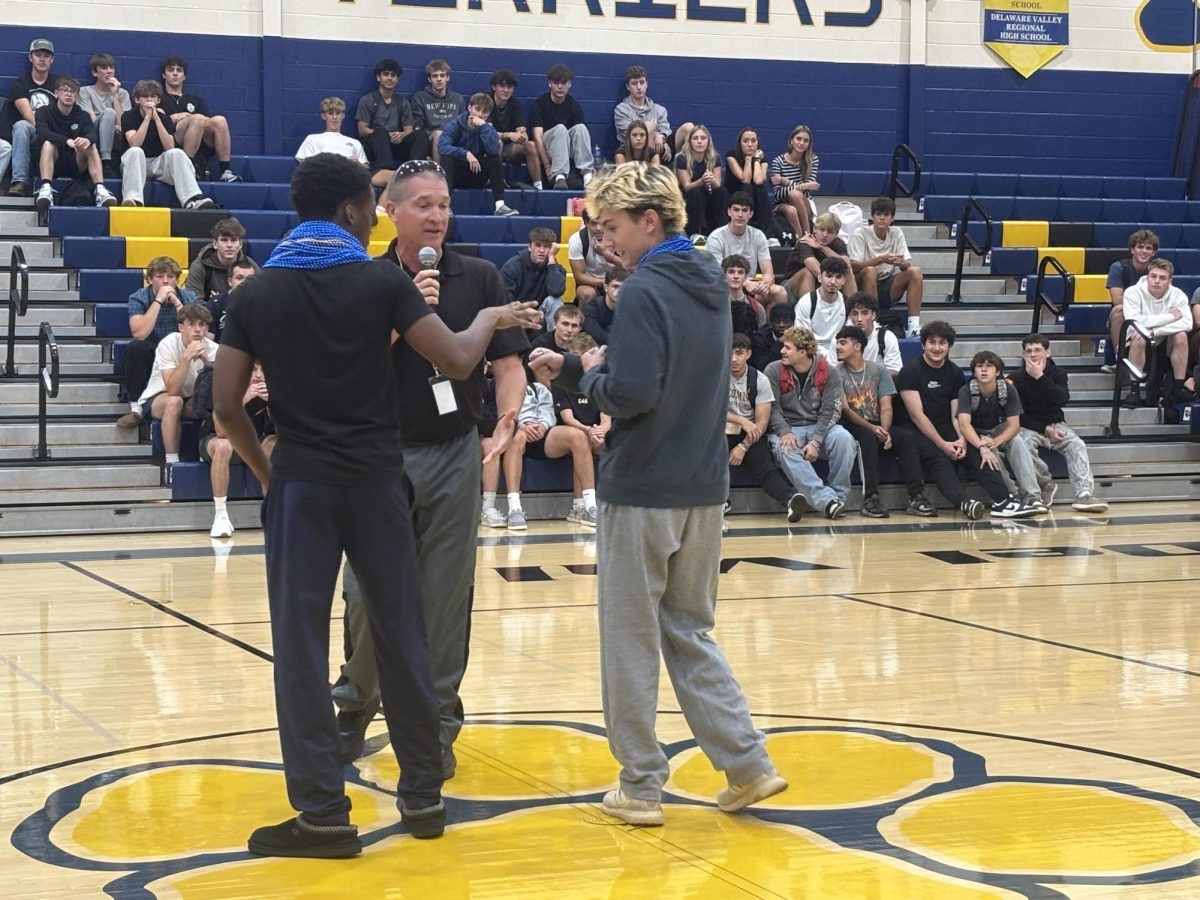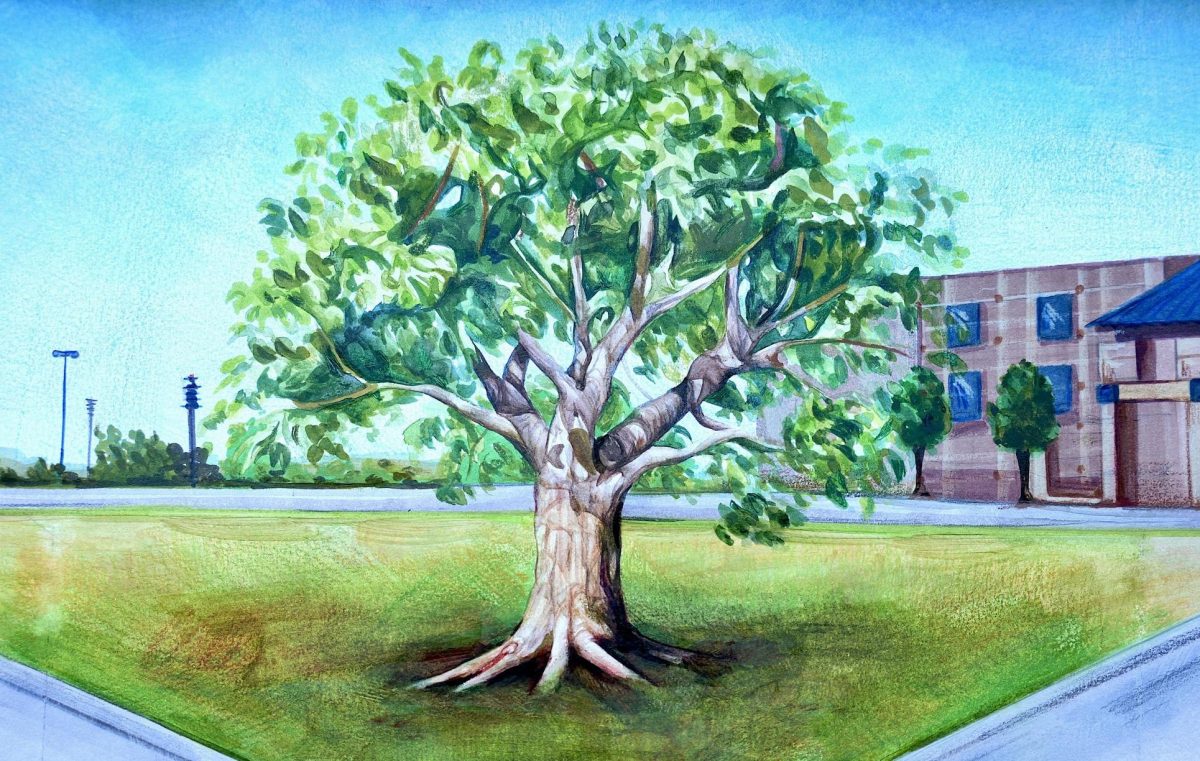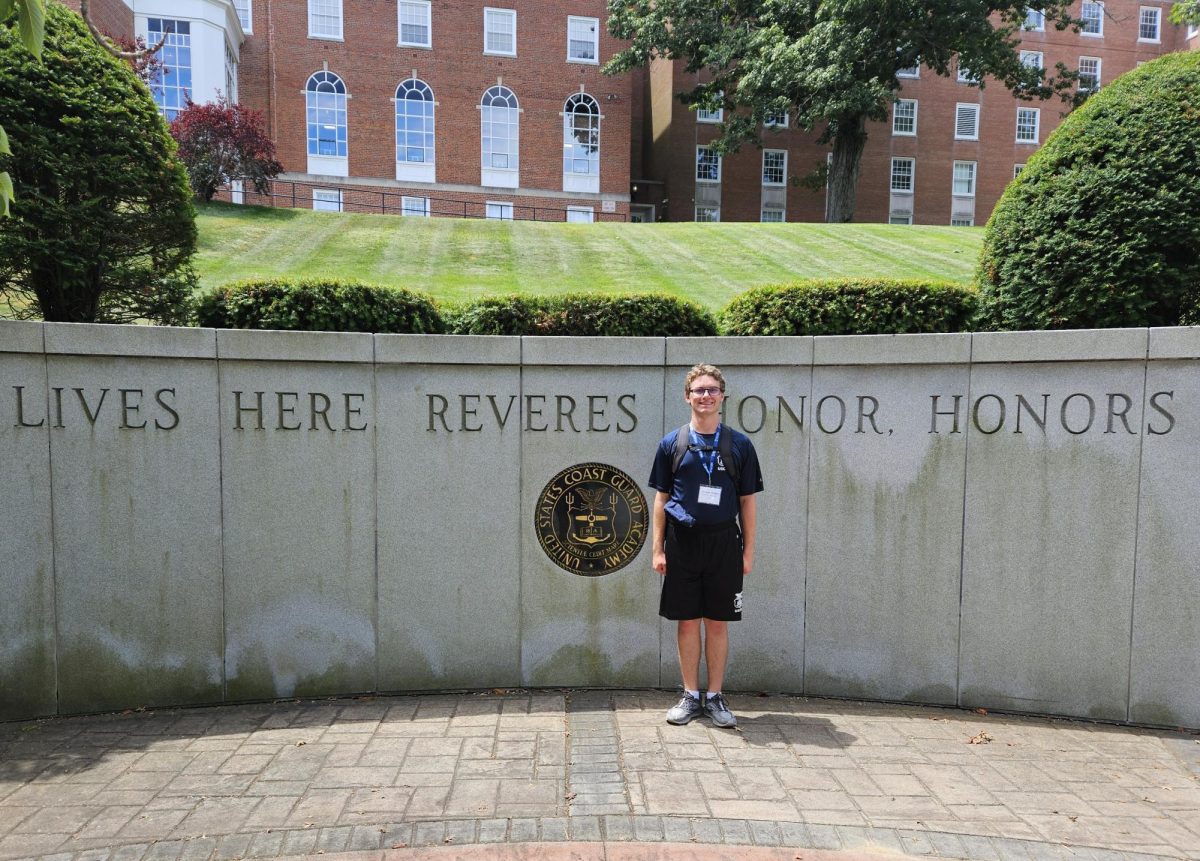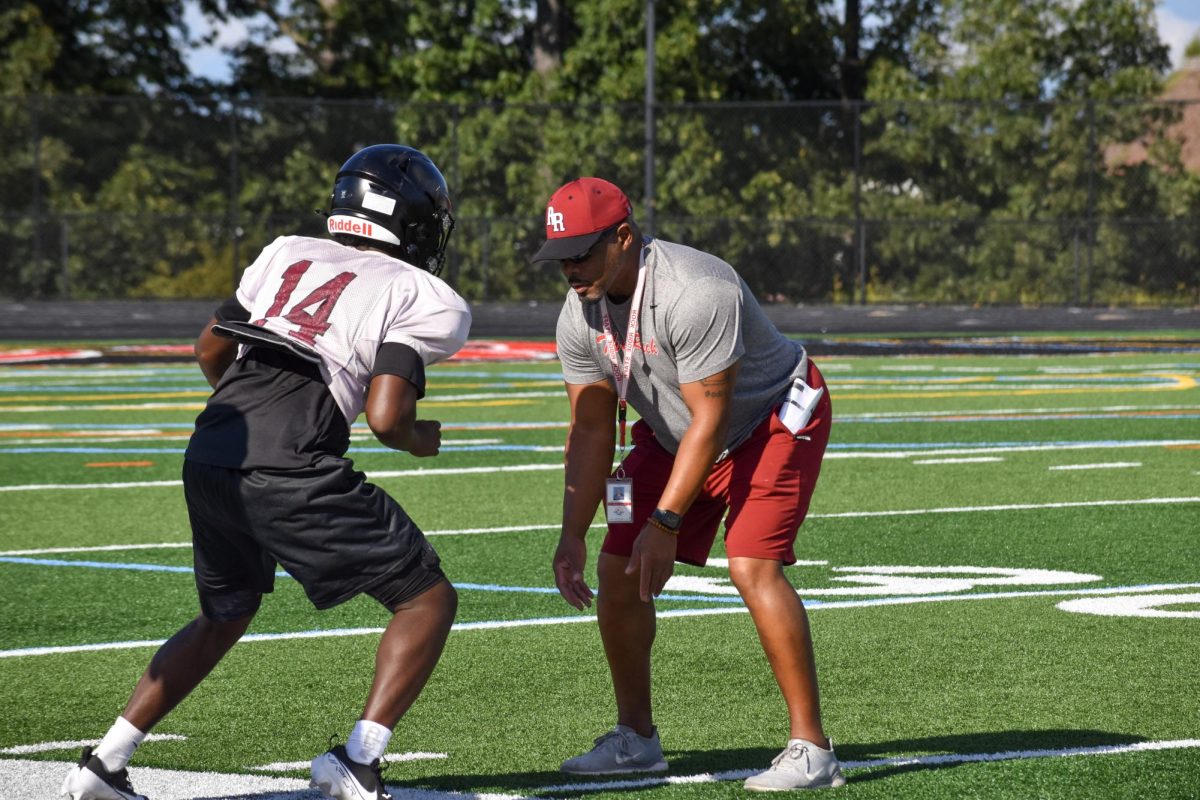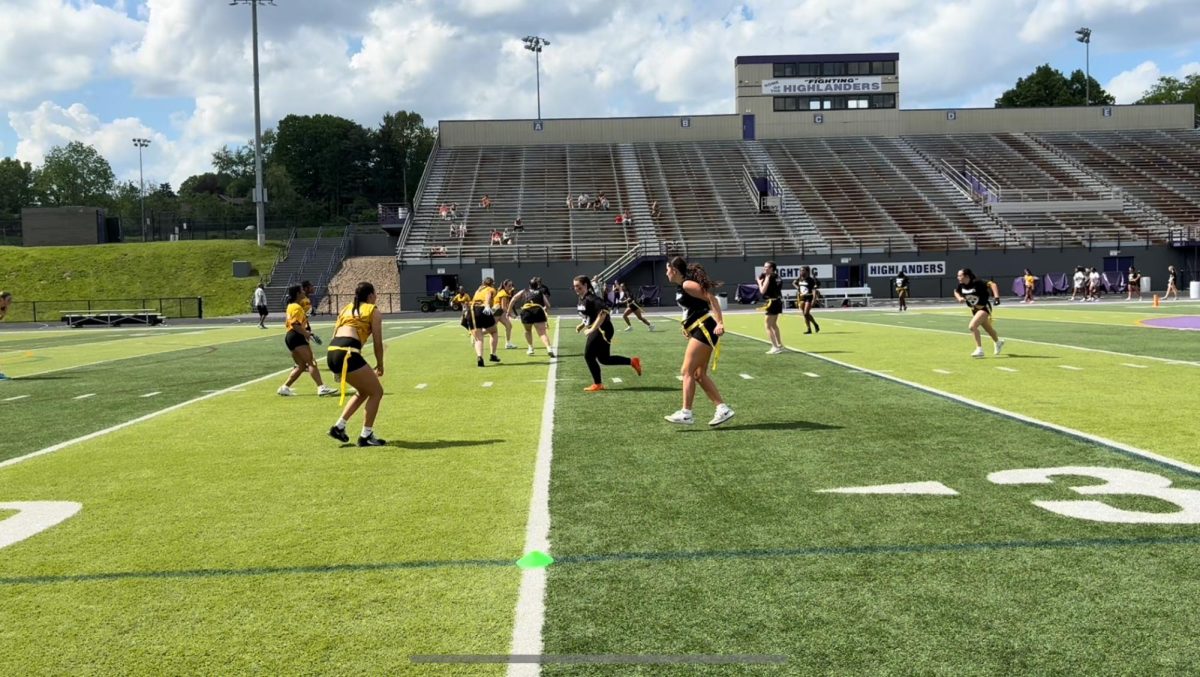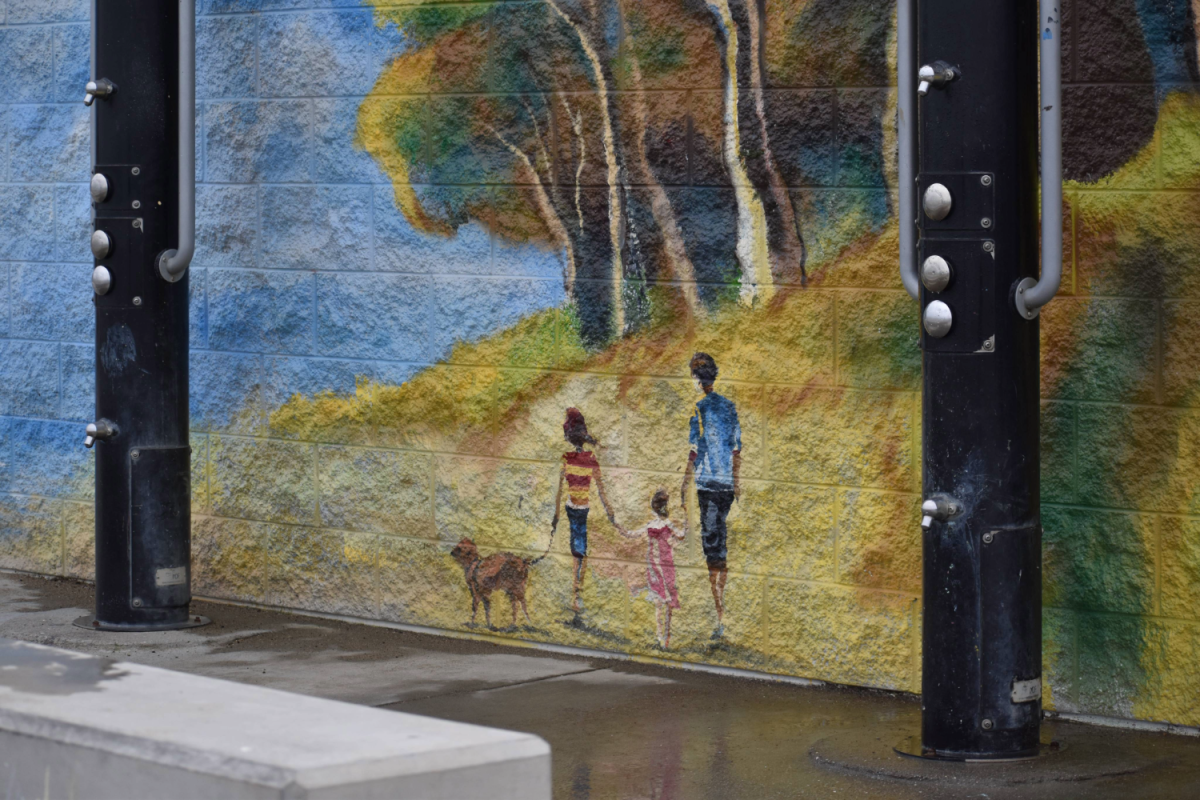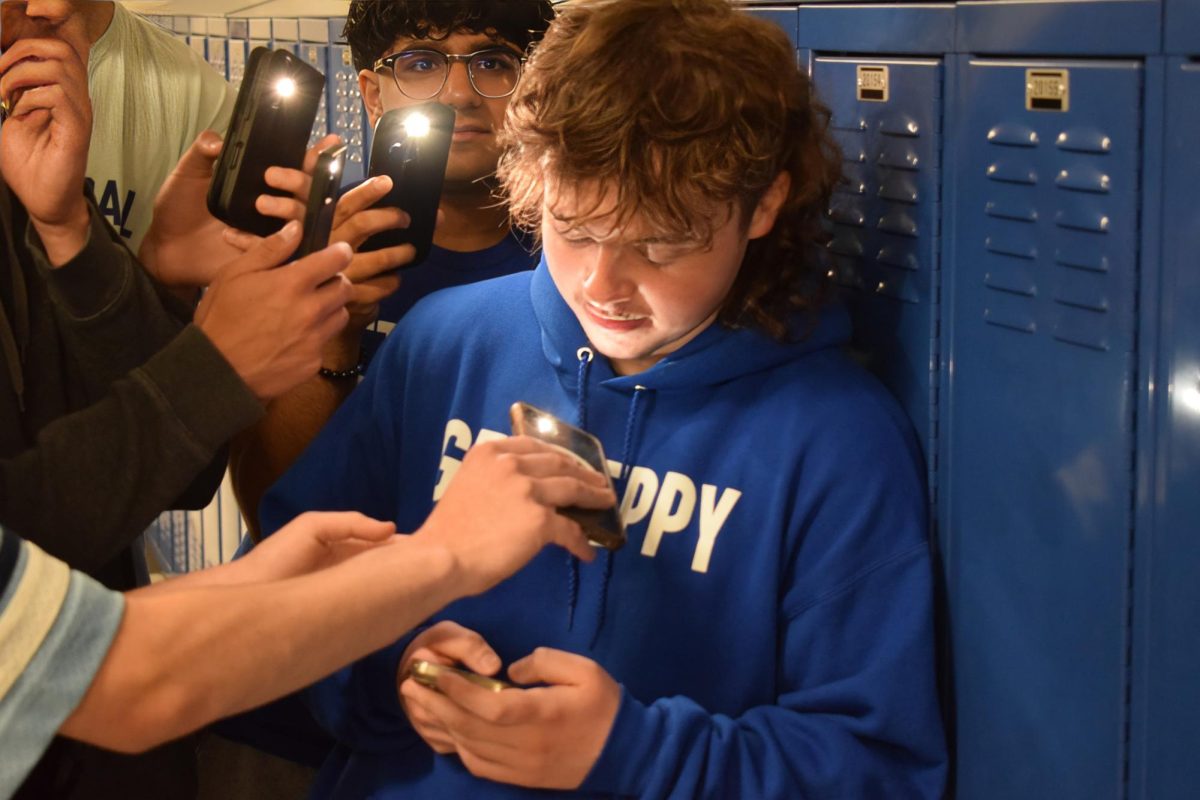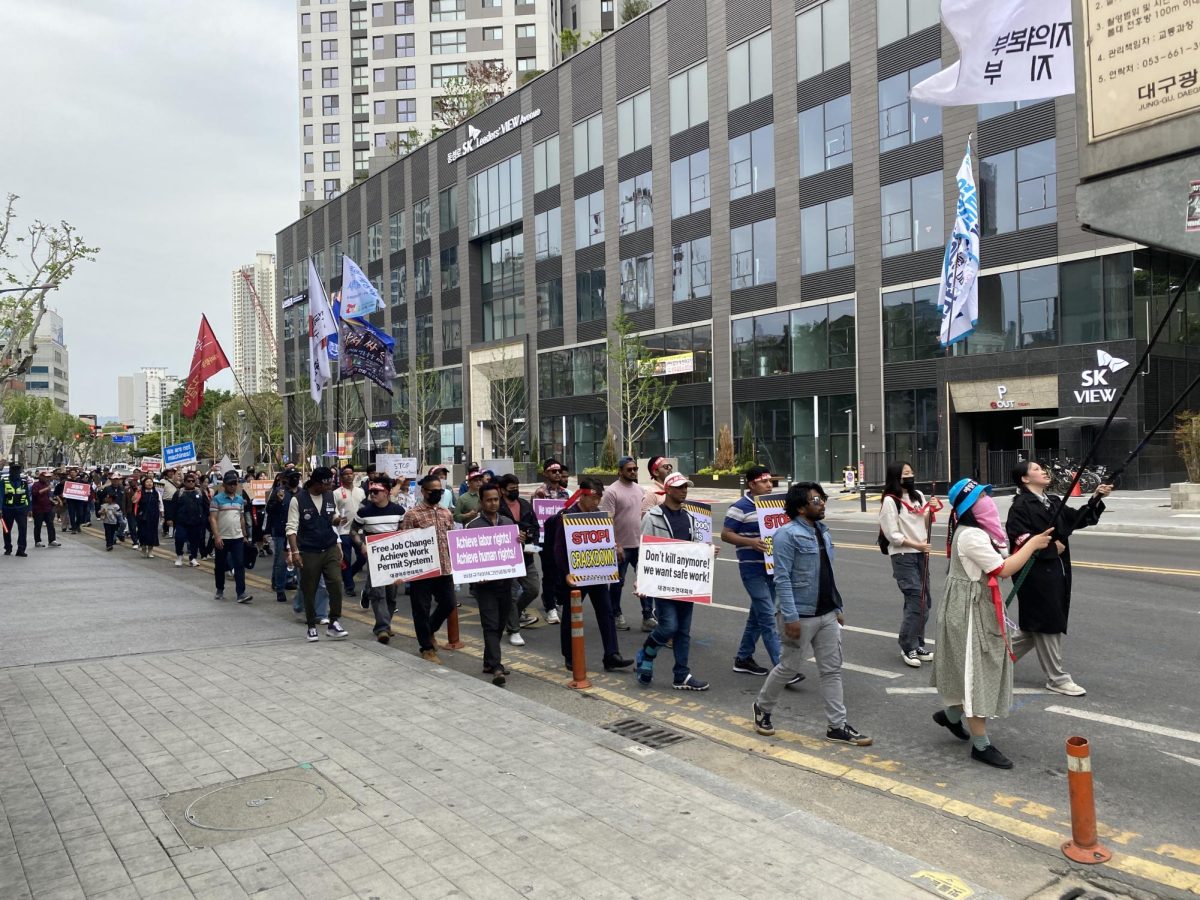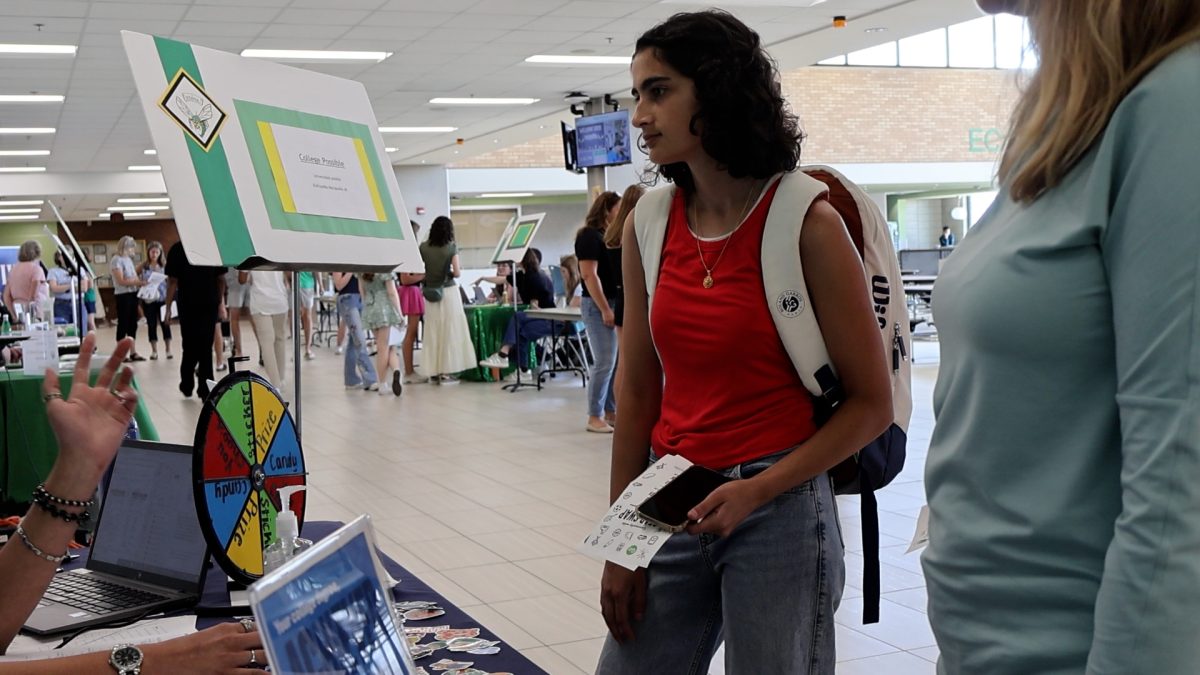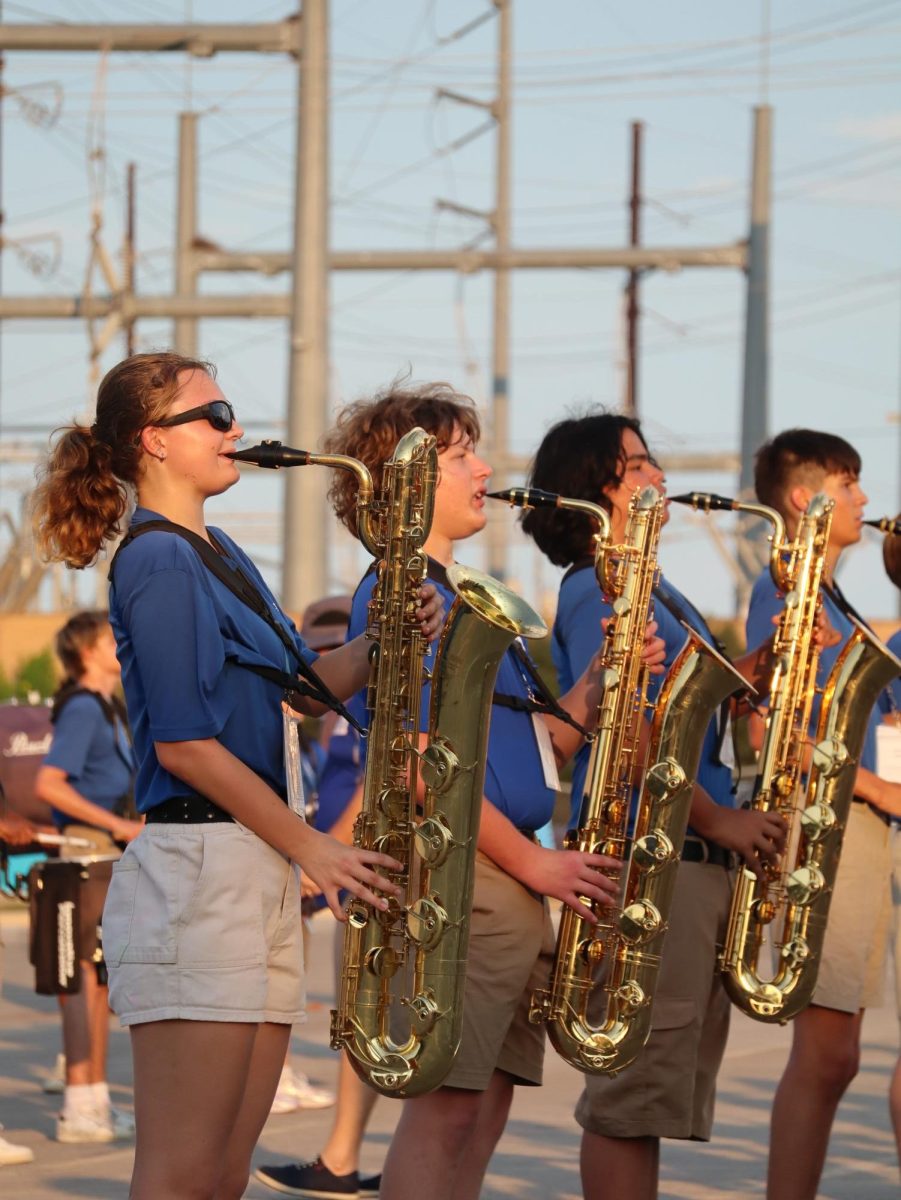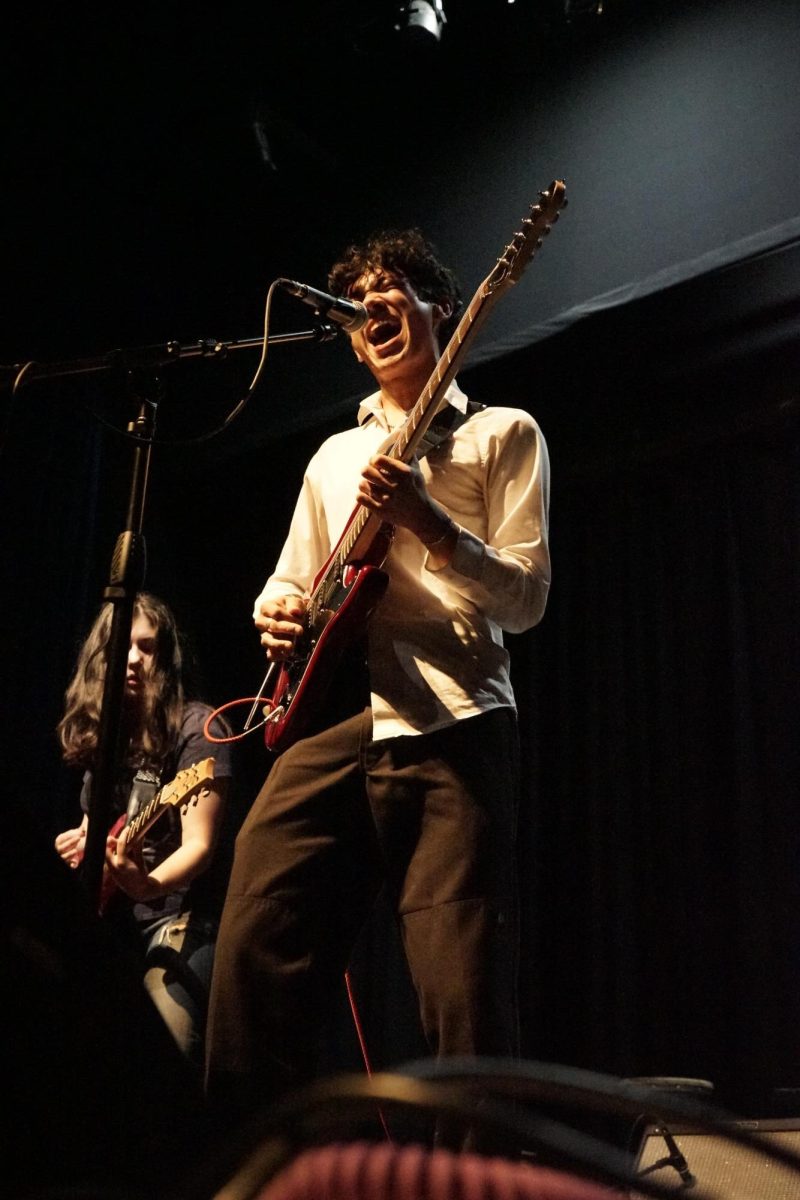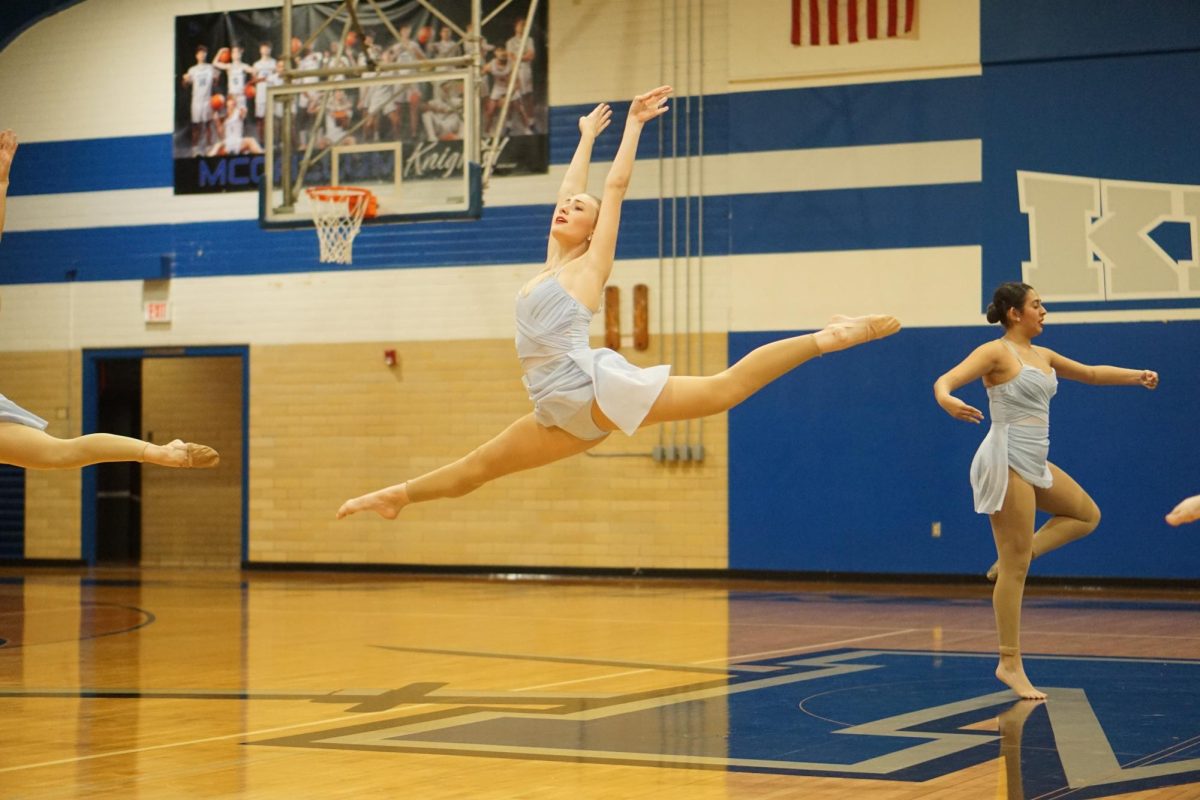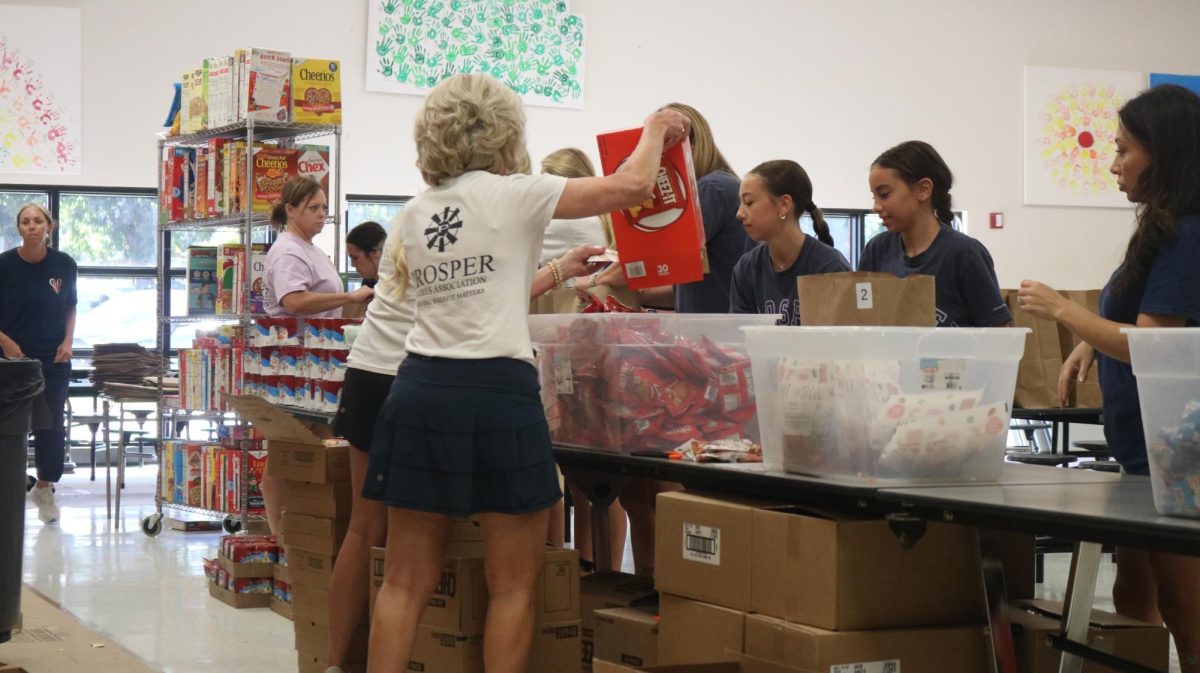Belly Buttons and Bylaws: A look into the controversy surrounding school dress codes
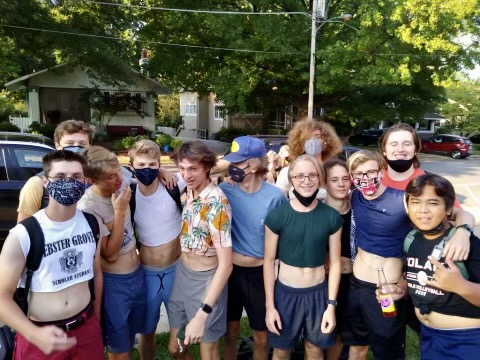
JJ Peel
A group of smiling Webster Groves High School boys show their support to the cause by wearing their most revealing belly shirts.
September 17, 2021
As St. Louis area high schools reopened at total capacity this past August, Webster Groves High School students found themselves punished for dress code changes to which they were unaware.
The students were under the impression that the dress code change they protested during the 2019-2020 school year had remained in place, but they were sorely mistaken. Over the summer, the Webster Groves School Board decided to update the school’s dress code to once again ban midriff-baring clothing for the new school year without informing the students of the change.
On the first day of school, August 23, which just so happened to coincide with a record-breaking heat index, some Webster students came to school wearing crop tops. Not only were the students told they were violating the dress code, they were sent home with warnings.
The inclusion of midriff-baring shirts on many high schools’ dress code policies has been an increasing source of controversy throughout the country year after year, and now Webster Groves High School is back in the thick of the controversy.
In response to the students receiving warnings on dress code violations that they didn’t feel they had been properly informed about, a group of outraged students started a petition to the school board on change.org to reinstate the original dress code that does not include midriff-baring shirts as a violation.
Webster Groves sophomore Charlotte Collier said, “The second day of school (the day after the infractions), I got sent a petition and signed it right away.” Collier was far from the only one to do so. As of September 8th, the petition has 1,624 signatures and 81 comments and is still rapidly gaining support.
“It was horrible going into school knowing that teachers and staff members were going to be judging my outfits based on an outdated policy,” continued Collier. “I know that the administrators are not sexist themselves, but they need to understand how this is being perceived. Right now, students do not feel comfortable because of this policy.”
As a culmination of growing tension, student outrage, and an eagerness to fight back, students from all grades gathered outside the high school’s main entrance before school on Friday, August 27, to send a message to the Webster Groves administration.
At the protest, many students, regardless of gender, sported their shortest crop tops because they felt the reinstated policies were blatantly targeted at women since men rarely wear clothing that shows midriff.
As explained by Collier, the targeted policies also made female students feel oversexualized in a setting where all they sought was comfort and respect. “I just don’t understand how my midriff is distracting in a learning environment,” said Collier. She continues, “When you tell women to cover up because men can’t control themselves, that is the issue, not the clothes themselves. Instead, teach men to do better, don’t make women cover-up.”
On the day of the protest, Webster Groves students spent the entire school day with their belly buttons proudly exposed. JJ Peel, a WGHS senior, reported that numerous men and women were sent home due to their “revealing” clothing, further proving the students’ points. According to Peel, during class, staff went as far as “rounding up” students with their midriffs showing in a mass attempt to eradicate the distracting clothing, all the while bringing more attention to the oppressive nature of the codes.
“They (the school board) messed up,” said Peel, “and their policies are silly and stupid, and if anyone is hindering our education, it is them for sending us home and writing us up, not the crop tops. That is why we protested.” Peel continued, “One of the most important things you can do for yourself and your comfort around others is wearing clothes you’re confident in, and if those clothes are crop tops for you, then why shouldn’t you be allowed to be comfortable?”
While the Webster Groves High School petition sparked conversation on whether crop tops should be included in its dress code policy, this St. Louis high school is not alone in its new bylaw.
Because the rule isn’t heavily enforced, it might come as a surprise that our very own Brentwood High School has this same crop top barring bylaw. According to the BHS Student Handbook, “Students should not wear clothing that exposes midriffs, navels, or cleavage.”
Whereas the Webster Groves administration has taken the more objective approach to their very similar dress code, administrators at BHS have agreed to take a more subjective look at enforcing the dress code — evaluating whether the dress code violation is disruptive to learning rather than just looking at the actual length of clothes.
BHS Assistant Principal Dr. Stephen Ayotte explained, “We don’t follow arbitrary standards such as ‘2-inch inseam’ or ‘how much midriff is exposed’ but rather more of an analysis of whether or not the clothing is disruptive; at all.”
BHS principal Dr. Ed Johnson agrees with Ayotte, elaborating, “We pride ourselves on inclusivity, and that means making sure the dress code is not targeted at one specific group of people.” The hope for this more holistic approach is that no group of students is wrongfully earmarked simply due to the clothes they are more likely to wear.
This subjective approach seems like a win for Brentwood students when it comes to feeling more freedom while dressing for school. Still, it can also feel confusing and uncomfortable for both students and teachers in the moments teachers must decide what disruptive clothes actually look like and, consequently, when this flexible dress code should be enforced.
Currently, Brentwood students rarely receive dress code infractions or are urged to cover up, and we’d be hard-pressed to find a student who is angry about that. Additionally, students and administrators alike seem to be on the same page regarding how they feel about this liberal interpretation of BHS’s dress code.
Yet, the policy still exists and is included in the school handbook that each student is given and asked to review, which begs the question, why is it even there?
What if there is a sudden sea change in thought and seemingly overnight Brentwood students are in the same boat as Webster students? Shouldn’t the midriff, navel, and cleavage bylaw be removed before it’s too late?
Although there have been no substantial policy changes yet on the Webster Groves front, students remain powerfully true to their cause. The Nest staff repeatedly attempted to reach out to the WGHS administration to get more information on the outcomes of the protest but did not receive any response.
In the meantime, along with a lack of policy changes, Webster Groves students see new and harsher waves of crackdown on the code. Peel noted that in the wake of the dress code protests, the boys’ cross country team had been barred from running without shirts on, a tradition the team has practiced for many years. However, WGHS students refuse to get discouraged and have expressed the importance of remaining loyal to these protests.
Allowing dress code policies to grow and mature along with time is vital to ensuring overall effectiveness and acceptance of the rules. Brentwood’s subjective approach to policies and codes is a much more modernized and well-received method, whereas Webster’s new “one size fits all” approach to keeping regulations in place clearly causes much controversy and disapproval. For the sake of comfort and contentment, the policies should fit the people.
This story was originally published on The Eagle on September 9, 2021.


